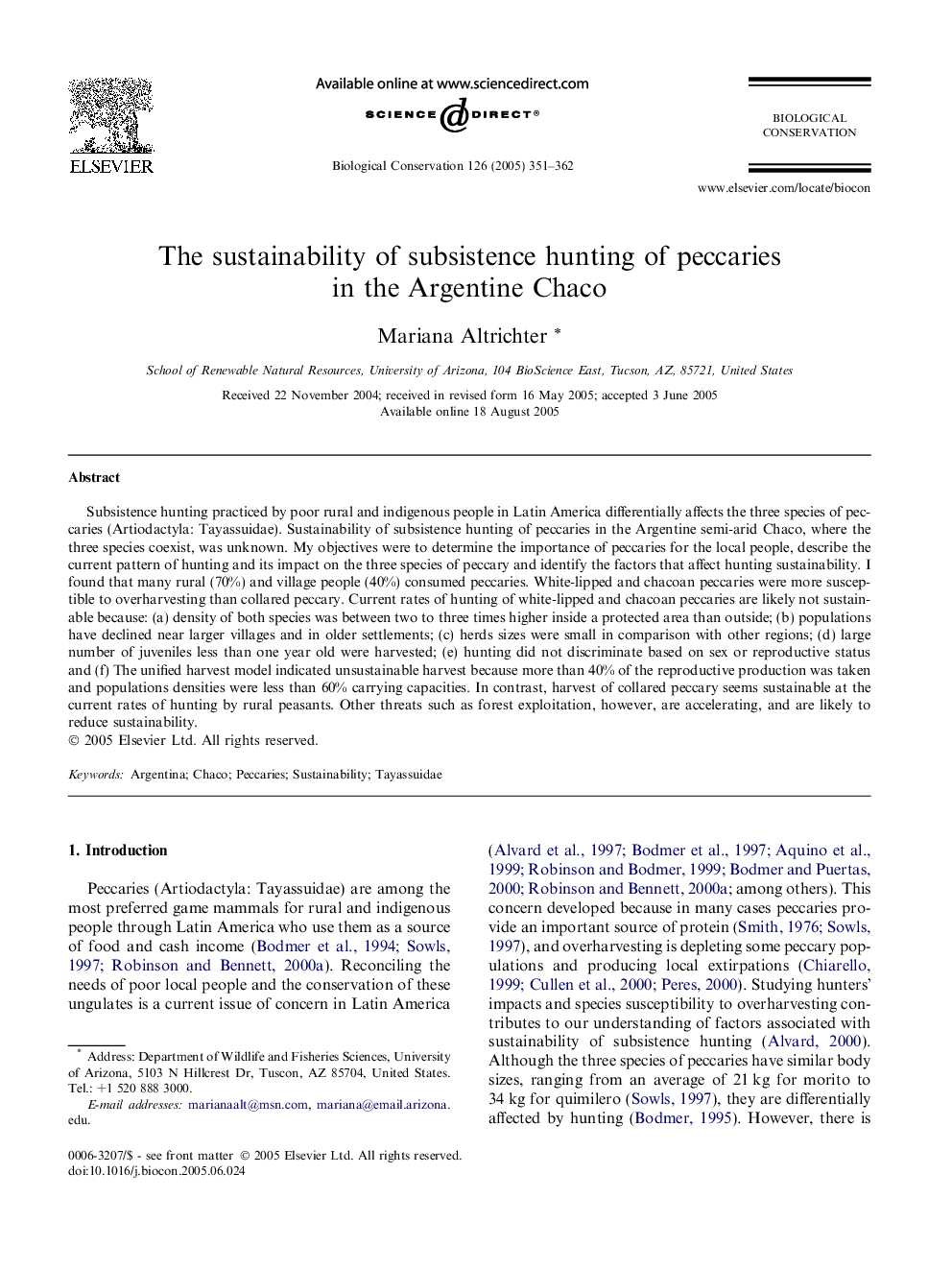| Article ID | Journal | Published Year | Pages | File Type |
|---|---|---|---|---|
| 9446012 | Biological Conservation | 2005 | 12 Pages |
Abstract
Subsistence hunting practiced by poor rural and indigenous people in Latin America differentially affects the three species of peccaries (Artiodactyla: Tayassuidae). Sustainability of subsistence hunting of peccaries in the Argentine semi-arid Chaco, where the three species coexist, was unknown. My objectives were to determine the importance of peccaries for the local people, describe the current pattern of hunting and its impact on the three species of peccary and identify the factors that affect hunting sustainability. I found that many rural (70%) and village people (40%) consumed peccaries. White-lipped and chacoan peccaries were more susceptible to overharvesting than collared peccary. Current rates of hunting of white-lipped and chacoan peccaries are likely not sustainable because: (a) density of both species was between two to three times higher inside a protected area than outside; (b) populations have declined near larger villages and in older settlements; (c) herds sizes were small in comparison with other regions; (d) large number of juveniles less than one year old were harvested; (e) hunting did not discriminate based on sex or reproductive status and (f) The unified harvest model indicated unsustainable harvest because more than 40% of the reproductive production was taken and populations densities were less than 60% carrying capacities. In contrast, harvest of collared peccary seems sustainable at the current rates of hunting by rural peasants. Other threats such as forest exploitation, however, are accelerating, and are likely to reduce sustainability.
Related Topics
Life Sciences
Agricultural and Biological Sciences
Ecology, Evolution, Behavior and Systematics
Authors
Mariana Altrichter,
